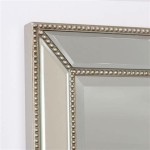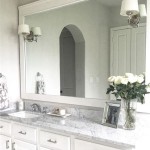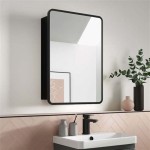Mirror To Hide Flat Screen TV
Homeowners often grapple with the challenge of integrating technology seamlessly into their interior design. Large flat-screen televisions, while offering immersive entertainment experiences, can sometimes clash with carefully curated aesthetics. One elegant solution to this dilemma is utilizing a mirror TV, a device that transforms from a reflective surface into a vibrant display screen.
A mirror TV essentially conceals a flat-screen television behind a specialized mirror. When the TV is off, the unit appears as a regular mirror, blending seamlessly with the surrounding décor. Upon activation, the mirror becomes translucent, allowing the television picture to shine through. This dual functionality makes mirror TVs a popular choice for those seeking a balance between technology and design.
Types of Mirror TVs
Several types of mirror TVs cater to different needs and budgets. Understanding these distinctions is crucial for selecting the appropriate unit.
Partial Reflective Mirror TVs: These TVs utilize a partially reflective mirror, providing a balance between reflectivity and picture clarity. When the TV is off, the mirror provides a reasonably good reflection, though slightly dimmer than a standard mirror. When on, the picture quality is generally excellent, offering a vibrant viewing experience.
Dielectric Mirror TVs: Dielectric mirrors offer superior reflectivity when the TV is off, closely mimicking the look and feel of a traditional mirror. However, this high reflectivity can sometimes slightly impact the picture quality when the TV is on, potentially resulting in a marginally dimmer image compared to partial reflective models.
Two-Way Mirror TVs: These TVs employ a two-way mirror technology, offering excellent reflectivity when off. The picture quality when on tends to be good, but not as bright as partial reflective options. This type is often chosen for specific applications, such as security surveillance or hidden displays.
Installation Considerations for Mirror TVs
Proper installation is vital for optimal performance and aesthetic integration of a mirror TV. Several factors should be carefully considered during the planning and installation process.
Framing and Mounting: The frame surrounding the mirror TV plays a significant role in its overall appearance. Choosing a frame that complements the existing décor is crucial for a seamless integration. Mounting options vary, from recessed in-wall installations to surface-mounted solutions. The chosen method will depend on the specific wall structure and desired aesthetic.
Wiring and Connections: Concealing the necessary wiring and connections is essential for maintaining a clean and uncluttered look. Planning the cable routing in advance, potentially during construction or renovation, can simplify this process. Wireless connectivity options, where available, can further minimize visible cables.
Lighting: Ambient lighting can significantly impact the viewing experience. Excessive glare from windows or overhead lights can diminish picture quality. Carefully considering the placement of the mirror TV in relation to light sources is crucial for optimal viewing. In some cases, incorporating adjustable lighting or window treatments might be necessary.
Choosing the Right Size and Location
Selecting the appropriate size and location for the mirror TV is essential for maximizing its impact and functionality. Several factors contribute to this decision-making process.
Viewing Distance and Angle: Similar to traditional televisions, the optimal viewing distance and angle depend on the screen size. Larger screens require greater viewing distances, while smaller screens offer more flexibility in placement. Considering the typical viewing positions within the room will help determine the appropriate size and location.
Room Aesthetics and Functionality: The overall aesthetic of the room and its intended function play a crucial role in choosing the right location. A mirror TV might be strategically placed above a fireplace in a living room, in a bathroom vanity, or even integrated into a bedroom wardrobe. The chosen location should complement the existing design and enhance the room's functionality.
Reflection Considerations: While the primary function of a mirror TV is to conceal a television, its reflective properties should also be considered. Positioning the mirror TV strategically to reflect desirable elements of the room can enhance its aesthetic appeal. Conversely, avoid placing it where it might reflect undesirable views or create distracting glare.
Careful consideration of these factors will ensure a successful integration of a mirror TV, blending technology seamlessly with design and enhancing the overall aesthetic and functionality of the space.

Television Framed Frameless Dielectric Mirror Tv

Tv Behind A Mirror Living Room In Bedroom

Television Framed Frameless Dielectric Mirror Tv

How To Make A Mirror Tv Step By Instructions

Frame Mirror Tv Kit Transform Your Into A

Mirror Covered Tv They Should Make Tvs That Look Like Mirrors With Ornate Frames Until You Turn It On Cool Framed Over Fireplace Living Room Wall

Tv Behind Two Way Mirror High Def Forum Your Definition Community Resource Wall Mounted

Hide My Tv Home Of Solutions

Television Framed Frameless Dielectric Mirror Tv

The Living Room Tv As We Know It Is Over Laurel Home








